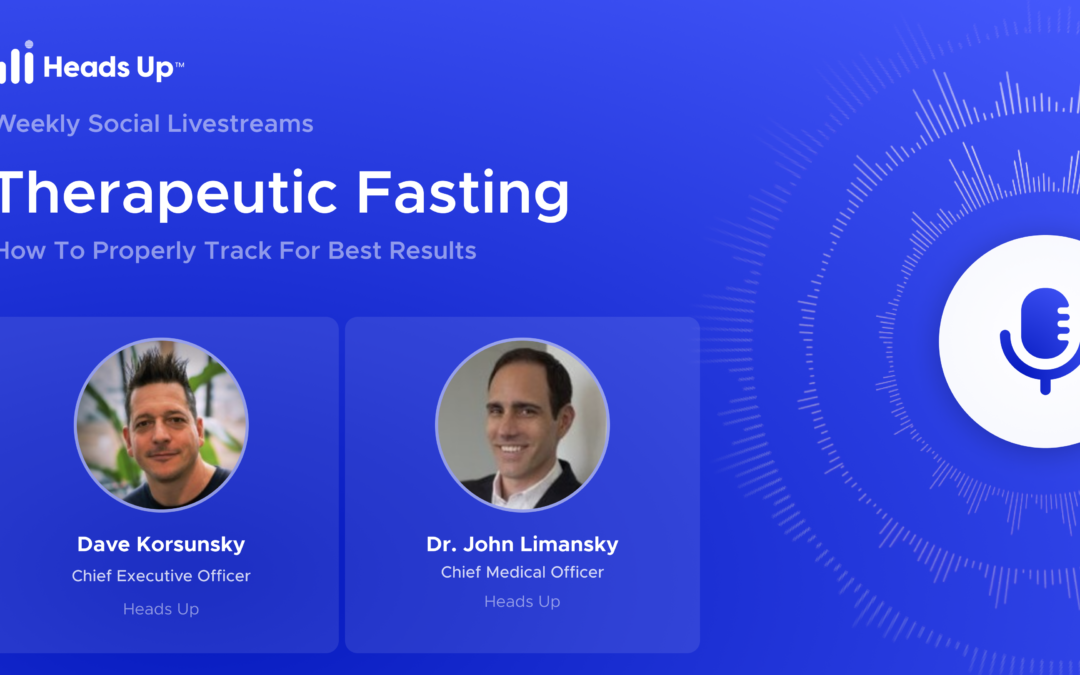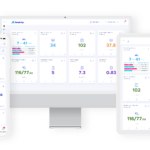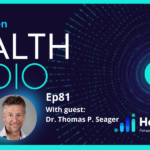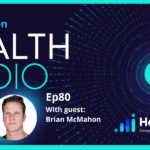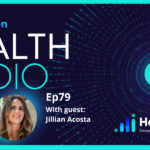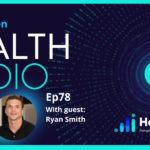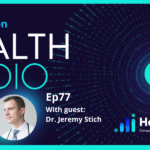In this livestream video, hosts Dave Korsunsky and Dr. John Limansky delve into the topic of therapeutic fasting. They discuss how fasting can be practiced safely and effectively, with a focus on monitoring vital signs using biofeedback to ensure the fasts are producing positive health results.
The conversation includes insights into different types of fasting, including short-term and extended, as well as the psychological and metabolic benefits of fasting. Join these experts as they break down the science behind therapeutic fasting and provide valuable information to help individuals and practitioners incorporate fasting into a healthy lifestyle.
Therapeutic fasting: How to properly track for best results
Hey everyone, welcome back. I’m your host, Dave Korsunsky, with my co-host Dr. John Limansky, and we’re going to dive in today and talk about therapeutic fasting.
Today, we’ll discuss therapeutic fasting specifically, covering how you can practice it safely and effectively while monitoring it carefully. Over the last several years, we’ve been working on ways to precisely measure what’s happening to your health during fasting, as it might be considered extreme.
You may be going without food for 24 hours, 48 hours, 72 hours, or even 10 days or more during water fasting. This is something that should not be taken lightly.
At Heads Up, we have dashboards to precisely track vital signs during fasting. Individuals who want biofeedback to ensure they’re fasting correctly and improving their health, as well as practitioners who want to remotely monitor their patients, can use these tools.
Once you learn how to read the numbers, it becomes one of the most rewarding parts. It’s really a tool to develop metabolic mastery. John, you have a tremendous amount of expertise here. You were the one who got me into doing my first 10-day water fast. I didn’t really know what I was signing up for, which was probably a good thing. Perhaps we can start with a quick overview of different types of fasting, such as intermittent versus extended, and therapeutic fasting for cancer and other conditions. Can you help us break down the taxonomy?
Of course, it’s good to be with everybody. I approach metabolic health in general by having different tools in my repertoire to use, depending on what I’m trying to accomplish. The idea of fasting has been taboo for a long time until recently, where people started realizing its benefits.
Dr. Longo, out of USC, was a pioneer in terms of extended fasting, showing the actual mechanisms of action and benefits at a cellular level. The online community has taken over and showcased the benefits further.
Beyond the metabolic benefits, there are psychological benefits. I approach obesity and nutrition in a similar way to addiction, the feeling that you always need to eat. Time-restricted eating and extended fasts can help you control food consumption, which many people find difficult.
By doing a time-restricted window, people can psychologically overcome the idea that they always need to eat. Your body is always using energy, and you have to fuel that energy. Most energy comes from glucose or stored glycogen. Allowing your body to use different sources of energy, like fat, can help you lose weight and access other energy stores.
Being able to lower the amount of glycogen and glucose in your system and suppress insulin levels allows you to access a constant supply of energy from ketone bodies or fatty acids, better hormone control, and reduced visceral fat. These factors impact your ability to lose weight or fat in the future.
A short-term fast can help you psychologically, allowing you to get away from having to eat all the time and begin accessing alternative energy stores.
The sweet spot for many people is 72 hours of fasting, which generates ketone production. By monitoring glucose meters, keto meters, and the GKI, you can see a marked difference in your ketone levels.
It’s fascinating to see your body switch over and start burning fat as its primary source of fuel. Once you reach this period where ketones are produced, hunger levels drop significantly, and many people find confidence in knowing they don’t have to eat every few hours like they’ve been told.
After passing 72 hours, most people find that the hardest part is done. Hunger waves may come as you extend the fasting period, but the most significant struggle is typically in the first 72 hours.
When you extend fasting beyond 72 hours, your body continues to adapt, and the benefits continue to accumulate. Longer fasts, such as 10 days or more, can trigger autophagy, a process where your body cleans up damaged cells and recycles parts of them for cellular repair and maintenance. This can boost the immune system, reduce inflammation, and contribute to overall health improvement.
During extended fasts, it is essential to monitor vital signs and electrolyte levels closely. Look for any warning signs, such as dizziness, fatigue, or muscle cramps, which may indicate the need for adjustments or intervention. If you’re inexperienced with fasting, it’s crucial to consult with a knowledgeable healthcare practitioner or coach to guide you through the process and ensure safety.
Furthermore, it’s important to understand that fasting affects people differently. Individuals with specific medical conditions, pregnant and breastfeeding women, or those who are underweight should avoid long-term fasting or seek professional guidance if considering fasting for therapeutic reasons.
Therapeutic fasting can provide numerous health benefits, both physically and mentally. However, it is essential to practice fasting safely, monitor your progress, and listen to your body throughout the process. Learning how to read your vital signs and understanding how your body uses various sources of energy during fasting can lead to better metabolic mastery and overall well-being.
Thank you for joining us today as we discussed therapeutic fasting. We hope you found this information helpful. Remember to consult with your healthcare practitioner or fasting coach to ensure the safe and effective implementation of fasting in your health journey. Happy fasting!
You know, you might feel like you’re going to pass out, but for most people, actually having done it before and knowing what to expect provides reassurance. When you experience fasting for the first time, you don’t know what to expect – people can tell you that around a certain period, you’ll experience hunger, thirst, or even flu-like symptoms such as the “keto flu.”
Having gone through it before, subsequent fasting experiences tend to be easier for a couple of reasons. Firstly, people gain familiarity with the process. Secondly, I wouldn’t recommend that most people transition directly from a high-carb, Western diet to fasting, as that can be quite difficult and may result in negative experiences.
Instead, I encourage individuals to gradually move towards fasting through a low-carb, keto, or Whole Foods diet for at least seven days. For some people, an egg fast for a few days is another option before transitioning into an extended fast.
It is essential to ensure that both the body and mind are ready for fasting, and it isn’t advisable to jump into extended fasts right away. Once people dedicate themselves to fasting, it can lead to adopting healthier eating habits and, subsequently, better overall health.
Fasting can help address issues such as insulin resistance and leptin resistance, the latter of which contributes significantly to an individual’s inability to lose fat. With suppressed hunger and an improved sense of fullness, people start to feel better, and their metabolisms become healthier.
In my experience, a 72-hour fast tends to be a sweet spot for many people. At the 72-hour mark, it is common to feel amazing and, in some cases, even exhibit improved physical and cognitive performance.
To address specific questions about choosing the best therapeutic fasting method, I recommend a water fast with electrolytes. Although it may seem counterintuitive, this type of fast can be both the most efficient and easiest for people to manage.
In contrast, juice fasts, coffee fasts, and goat milk fasts can be more challenging because they do not adequately suppress insulin levels. A water fast with electrolytes – or a green tea fast – can offer the best outcomes.
Before starting a fast, the prefast program should be tailored to individual needs. People should consider transitioning to low-carb, keto, or Whole Foods diets or trying an egg fast before beginning their fasting journey. By taking these steps, the fasting experience can be both more manageable and more beneficial for long-term health.
When preparing for a fast, it’s important to remember that each person’s needs and experiences may differ, so the duration and type of fast should be chosen based on individual health goals and comfort levels. Keep in mind that it’s essential to listen to your body and make any necessary adjustments along the way.
For some people, intermittent fasting – where you eat during a restricted time window each day – can be a useful introduction to the practice. This approach allows you to gradually increase the fasting period to longer durations, such as a 24-hour or multiday fast if desired.
During a fast, it’s crucial to stay well-hydrated and maintain electrolyte balance. This can be achieved through the consumption of water, green tea, or even adding a pinch of salt to your drinks. For those who require additional assistance or guidance, it may be beneficial to reach out to a healthcare professional or nutritionist who specializes in fasting.
When breaking a fast, it’s essential to reintroduce food gently to your system. Start with easily digestible foods such as bone broth or steamed vegetables, and gradually work your way up to more complex foods. Avoid consuming large meals or high-carbohydrate foods immediately after a fast, as this can cause discomfort and negate the benefits you’ve gained during the fasting period.
Fasting can offer numerous health benefits and improved well-being when done correctly, taking into consideration the appropriate methods and individual goals. It’s vital to educate yourself on different fasting types, durations, and practices to maximize the benefits while minimizing potential risks. Remember, listen to your body, and seek guidance from healthcare professionals if needed.
Fasting Dashboard


Brief Transcript
00:03:14 Therapeutic fasting, which is a type of fasting that can be done safely and effectively. They discuss different types of fasting, including intermittent fasting and extended fasting. They discuss the benefits of fasting, including metabolic benefits and psychological benefits. The host recommends using different tools to achieve different goals, depending on the type of fasting being done.
00:06:43 Discusses the popularity of lego movies, and how they can be used to help people lose weight. It explains that fasting can also have similar benefits, and that by suppressing your appetite, you can help to lose weight more effectively. The video also discusses the importance of ketone bodies, and how they can help to provide an endless supply of energy. Finally, the video discusses the importance of fat distribution, and how losing more visceral fat can have a cascading effect on other areas of your body.
00:09:58 The benefits of fasting, and how it can be done effectively for people with different levels of insulin resistance. He also mentions that the first few times fasting can be difficult, but with practice it becomes easier. He also mentions that the psychological component is a major hurdle for many people, and that having experience with fasting beforehand can help ease that hurdle.
00:13:32 The benefits of fasting, and provides anecdotal evidence of how it can improve health. The author also discusses the benefits of fasting for those who have not fasted before, and provides anecdotal evidence of how it can improve health. The author also discusses the benefits of fasting for those who have insulin resistance, and provides anecdotal evidence of how it can improve health. The author also discusses the benefits of fasting for those who have leptin resistance, and provides anecdotal evidence of how it can improve health. The author provides data that supports the anecdotal evidence, and discusses how fasting can be a positive reinforcement for those who are trying to improve their health.
00:16:46 Benefits and drawbacks of various types of fasts, and provides advice on how to achieve the most successful results. It also discusses the importance of following a prefast program before embarking on a fast.
00:20:19 Benefits of fasting, and provides a brief overview of how to fast correctly. It also discusses blood sugar levels and how to monitor them while fasting. Finally, the video discusses how to track your fast progress and how to achieve 100% mastery over your metabolism.
00:23:53 How fasting can change the body’s primary fuel source from glucose to ketones. The glucose Ketone index (GKI) is a metric that looks at the ratio of glucose to ketones in the blood. When fasting, the GKI is lowered as more ketones are used to power the body. This can help improve certain health conditions, such as cancer or epilepsy. Zone 2 cardio training and a healthy diet can also help increase fat burning.
00:27:01 Discusses the idea that you can increase your glycogen stores by eating low carbohydrate or keto, and that this can improve performance. The video also discusses the importance of ketone bodies and fatty acids in the body, and how they can help you be more metabolically flexible. The video also discusses the metabolic health summit, which is an academic conference focused on this topic.
00:30:32 The latest scientific developments around deep therapeutic ketosis and how it is being used to treat mental health disorders, specifically bipolar schizophrenia epilepsy. There is evidence that keto is effective for these conditions, and it is exciting to see this as a news therapy for many difficult to treat mental health disorders.
00:34:00 An overview of John’s theory that cancer is caused by dysfunctional metabolism, and that fasting can help improve cell function and reduce cancer risk. The video also discusses the benefits of fasting for people with diabetes, and John provides a brief explanation of the biochemistry of a 72-hour fast. Finally, John asks for input on how people are sleeping and their heart rates before bed, and discusses the potential benefits of fasting for body composition.
00:37:15 The benefits of fasting, including improved sleep and heart rate variability. He also notes that while fasting, there may be a temporary drop in heart rate variability. Once he resumes eating, his HRV increases. He recommends fasting as a way to improve overall health, but notes that when fasting, it is important to also take care of oneself by engaging in exercise and other active activities.
00:40:47 Benefits of fasting, and provides a brief overview of how to fast successfully. The video also discusses the importance of tracking hunger and hydration levels, and discusses the potential weight loss that can occur during a 72-hour fast.
00:43:58 The benefits of fasting, including the ability to control blood sugar and HRV. It also discusses the importance of measuring your glucose, ketones, and other health indicators to achieve optimal health.
00:50:08 The benefits of fasting, and provides information on how to do it safely and effectively. It also discusses the importance of measuring fasting properly in order to get the most out of it.
Conclusion.
In conclusion, therapeutic fasting has gained popularity in recent years due to its many health benefits, including fat and visceral fat loss, improved metabolic health and energy, and potential cancer-fighting effects. As discussed by Dave Korsunski and Dr. John Limansky in this video, proper monitoring and biofeedback are crucial when practicing fasting to ensure safety and effectiveness. While there are different approaches to fasting, including intermittent and extended fasting, each person should tailor their fasts to their bodies and goals. With the proper guidance and monitoring, therapeutic fasting can be a powerful tool in improving and maintaining health.
Don’t miss out on future live streams! Subscribe here to stay in the know.
